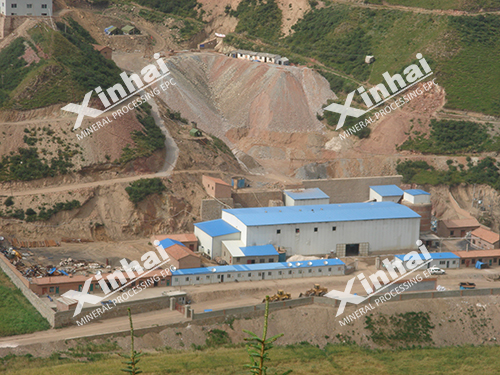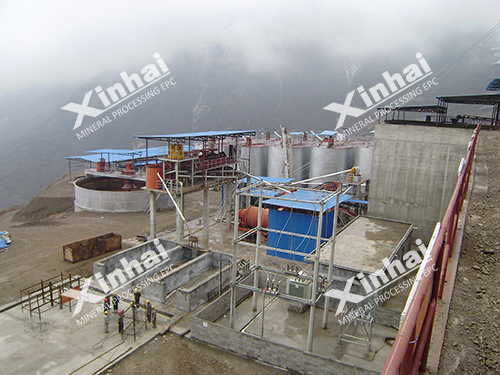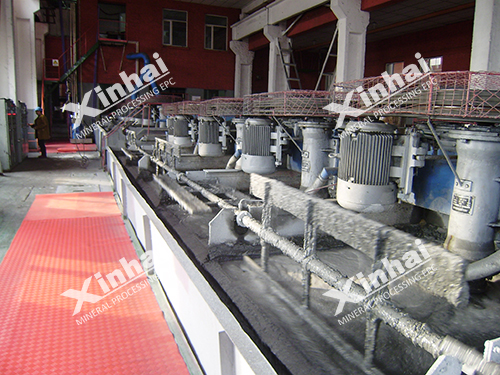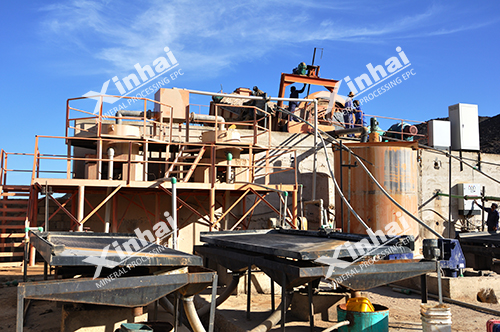
Gold ore beneficiation is the process of concentrating valuable gold minerals from the raw ore through a series of physical and chemical separations. The primary objective is to improve the ore grade before further processing such as smelting. With nearly 500 EPCM+O projects and extensive field experience across a wide range of ore types, Xinhai's integrated approach underscores the importance of tailoring process flows to the inherent characteristics of each deposit.
Modern gold beneficiation processes generally fall into three main categories:
Cyanidation-Based Methods
Flotation-Based Methods
Gravity Separation Technologies
Each method has its own advantages and is selected based on factors such as ore mineralogy, particle size distribution, and environmental considerations.

Agitation cyanidation is widely used in treating finely ground ore or slurry. This method is subdivided into:
Cyanidation-Zinc Replacement (CCD/CCF): In this process, after leaching, zinc powder acts as a reducing agent to precipitate gold and silver from the leach solution through a countercurrent washing system. It ensures high recovery rates by facilitating the formation of "gold mud" ready for smelting.
Carbon-in-Pulp/Leach (CIP/CIL): Here, activated carbon is directly introduced into the cyanide pulp to adsorb dissolved gold. Following adsorption, gold is desorbed in a high-temperature, high-pressure electrolysis cell. Xinhai has further optimized these operations with automated control systems, resulting in faster desorption rates, lower energy consumption, and the capacity to operate without additional cyanide—thus reducing environmental risks.
Percolation methods such as pool and heap leaching allow the cyanide solution to infiltrate through ore layers. This technique is particularly suited for alluvial and loosely compacted ores. Once the leach solution is collected, subsequent processing with activated carbon, ion exchange resin, or zinc replacement recovers the gold efficiently while enabling reagent recycling.
By developing environmentally friendly reagents to replace conventional sodium cyanide, Xinhai has enhanced the recovery speed and leaching rate while addressing stringent environmental protection standards.

Flotation is predominantly used for gold-bearing sulfide ores. In this method, specific collectors and foaming agents (for example, xanthate and terpineol) are employed to separate sulfide minerals. The floated concentrate is often subjected to a secondary cyanidation or thiourea leaching stage, especially when dealing with ores containing high levels of impurities such as arsenic or sulfur.
An innovative variation - the flotation–thiourea leaching process - has emerged as a solution to treat gold concentrates that are refractory or contaminated by elements that inhibit conventional cyanidation. This modification reduces processing times and enhances the overall gold extraction efficiency.

Gold, especially in its free or coarse-grained forms, can be effectively recovered by gravity separation, which exploits differences in specific gravity. Key methods include:
Jigging: Utilizing variable speed and vertical oscillatory motions, jigging separates heavy gold particles from lighter gangue.
Shaking Tables: These devices employ a reciprocating motion along with a controlled water flow to stratify ore on a table surface. They are especially effective for finer particle ranges.
Spiral Chutes: By using inclined water flow, spiral chutes separate minerals based on differential settling. This technique is both cost-effective and suitable for large capacity operations.
The integration of gravity separation with flotation and subsequent cyanidation allows for "early harvesting" of coarse particles, thereby increasing overall recovery and reducing unnecessary grinding energy.

Xinhai's research and engineering teams have introduced breakthrough innovations in gold ore beneficiation:
Precision Beneficiation Testing: State-of-the-art laboratories with advanced analytical tools (including high-resolution spectrographic and laser particle size analysis) allow for customized test plans. These tests accurately determine the most effective processing parameters.
Innovative Equipment Design: The company's proprietary equipment – such as double impeller leaching agitation tanks, zinc powder displacement devices, and advanced washing thickeners – are designed using finite element analysis to optimize performance, minimize power consumption, and achieve rapid desorption rates.
Process Integration: By combining multiple beneficiation methods (for example, integrating gravity separation with cyanidation in closed-circuit systems), Xinhai maximizes the exploitation of gold particle liberation and minimizes residual gold in tailings.
Operational Flexibility: With the capability to quickly adapt to various ore types and local mining conditions, Xinhai's EPCM+O service model ensures that processing plants not only meet but exceed industry standards under both domestic and international regulations.

Xinhai's project portfolio—including installations in Africa, Asia, and the Americas—demonstrates the viability and success of its tailored solutions. Projects vary widely in capacity and complexity, ranging from high-throughput plants designed for coarse, free-milling gold ores to specialized processing lines that target refractory ore bodies with integrated cyanidation and flotation schemes.
The company's commitment to continuous improvement, environmental stewardship, and operational excellence has consistently resulted in enhanced recovery rates and lower operating costs across its installations. This performance record has earned recognition through certifications such as ISO 9001, ISO 14001, and international safety accreditations, affirming Xinhai’s position as a leader in mining technology.
Gold ore beneficiation is a complex and evolving discipline that requires the integration of chemistry, metallurgy, and engineering. Shandong Xinhai Mining Technology & Equipment Inc. has pushed the boundaries of traditional processes through innovative methods in cyanidation, flotation, and gravity separation. With a robust foundation in research, precision testing, and equipment innovation, Xinhai is uniquely positioned to deliver solutions that meet the rigorous demands of modern mining—ensuring higher gold recoveries, lower operational costs, and a reduced environmental footprint.
For economic viability and environmental control, phosphate ores must undergo beneficiation—the processing of phosphate rocks to increase phosphorus content and eliminate impurities.
Gold mining? It's a money - guzzling industry, and let me tell you, the cost of equipment can really make or break your profitability. I've been around the block in this business, and I'm here to give you the lowdown on all the costs related to different gold mining equipment.
